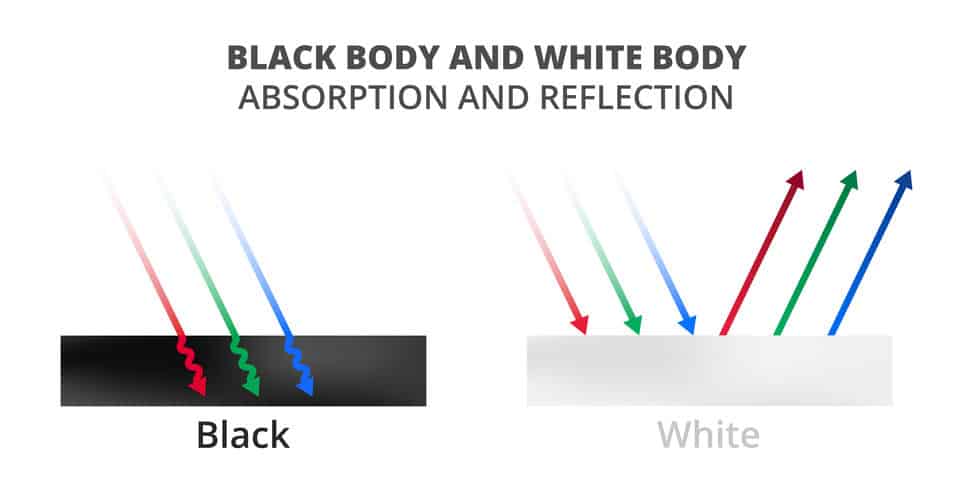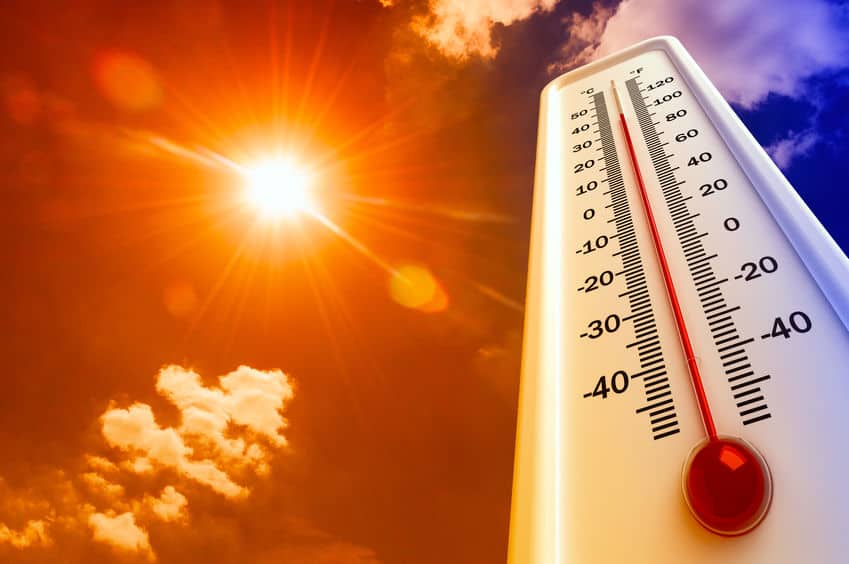What Car Paint Colors are Best for Hot Weather? (Here’s Why!)
Hot weather can be a great thing for summer activities, but it has the downside of turning cars into red-hot ovens. The paint color of your car affects the interior and exterior temperatures it can reach when it’s exposed to the heat and sun outside. The wrong paint color can create a boiling hot car on a hot (or even warm) day.
A car’s color can affect the amount of heat it absorbs or reflects. Dark colors (black, blue, dark red) absorb heat, while lighter colors (white, grey, yellow) will reflect heat and keep it cooler. The most common colors that absorb the least amount of light are lighter colors.
Cars come in every shade of the rainbow, but the area that you live in can affect the heat transfer throughout the car. Hot temperatures can damage cars and make them too hot to drive in! Choosing the right color for your car is crucial if you live in a hot area.
Reflection and Absorption

Color reflection and absorption come from a branch of science called spectroscopy. Spectroscopy is the study of the interaction between matter and electromagnetic radiation. The electromagnetic radiation comes out as wavelengths and frequencies depending on the type of wave being presented. For example, radio waves have a longer wavelength than those of the visible color spectrum.
The color spectrum has its own different wavelengths and frequencies within itself. A rainbow is a perfect example of what the color spectrum looks like and how different wavelengths are used in different colors. Some colors are easier to see than others. For example, the color yellow is easier to see than the color red. These colors and their light wavelengths affect their heat absorption and reflection properties.
Reflection
Reflection is an important part of seeing color because the color that is reflected off of a surface is the color we see. The light reflected is also a collection of heat and light that is bouncing off a surface. The color white is actually all of the colors being reflected off of the surface that you are looking at.
Absorption
Absorption is the opposite of what reflection is in the color spectrum. When color is absorbed instead of reflected it collects the light and heat that are shining down on it. The color that absorbs all of the colors is the color black. While absorbing all of the light, it is also absorbing all of the heat as well. That is why when you are wearing a black tee-shirt, you heat up more quickly than you do when you’re wearing a different colored tee-shirt.
Weather

Weather is an important factor in color absorption. This is because a certain color can absorb all of the wavelengths of light and heat, but you can still be cold. Light can be found everywhere, but some places are definitely hotter than others. There are certain areas in the world where it is hot and humid, hot and dry, cold and humid, and cold and dry. These types of weather conditions can be all year long or just seasonal.
If the color of a car is a dark blue or black color, more light and heat are being absorbed. The difference is in temperature. if that car was placed in the wintertime, it would be quite cool (or pleasantly warm) on the inside of the car. If that car was placed in the summer or hotter weather, the inside of the car would match the same temperature as the outside. It might even be worse because the heat becomes trapped and can’t be cooled down by the wind.
Type of Paint
Cars have a certain type of paint that is used to coat the vehicle. It is called acrylic polyurethane “enamel paint”. This paint is used to create a pigmentation on the car of a certain color and then is layered with a clear topcoat. Acrylic polyurethane is a water-based paint that is most widely used for reasons like reducing the paint’s impact on the environment. This paint is also lighter than other acrylic paints that can be used on cars and exterior paint.
Most enamel paints are heat resistant up to 500 degrees Fahrenheit. Not all of them are like that, because of the different lightness in weight. This paint has a high heat tolerance when absorbing heat so it doesn’t melt off the car. Even though it has a high heat tolerance, it can still absorb heat and bring it into the interior of the car.
Having paint that has a certain level of heat resistance helps cars have color and a small cooling system on the outside of the car. Heat-resisting can only do so much before the paint absorbs light to heat the car. With a lighter color, there is not as much heat being absorbed and focused on in certain areas. The color and heat resistant level on the paint helps to maintain a good balance of heating and cooling within the car.
Light Color
The most ideal color of paint for a car in hot weather is to have a lighter color compared to a darker one. Lighter-colored cars have a greater time staying cooler than darker color cars in the heat. This effect occurs because the light is reflected and not absorbed.
The most reflective color that a car can have is pure white. The white color can get dirty but has a higher chance of staying cool for longer periods of time. The next most reflective color would be yellow or orange. These two colors are the most vibrant on the color spectrum and are mostly seen to the eye compared to other colors. If you have a pale blue or pink car, it has similar effects compared to a yellow car. Because there are many different shades of each color, there can be different levels of absorption and reflection.
Having a light-colored car in a hotter climate or hot weather can make life a little easier and cooler. The next time you are shopping for a car, and you live in a hot climate, consider buying a light-colored car!
